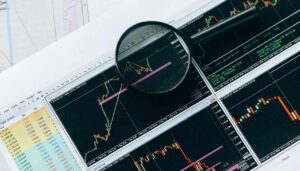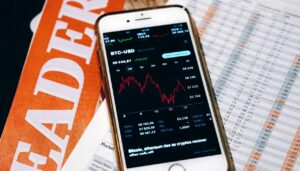Forex Secrets Tips and Strategies for Profitable Trading

Forex trading offers great opportunities to make a profit, but it can be a complex and challenging market to navigate. To succeed in Forex trading, you need a deep understanding of the market and the right strategies to manage risk and maximize profits.
In this comprehensive guide, we will reveal some of the best Forex secrets, tips, and strategies for profitable trading. We will cover everything from fundamental and technical analysis to risk management and choosing a reputable broker.
Whether you are a beginner or an experienced trader, this guide will provide you with the tools and knowledge you need to succeed in the world’s largest and most liquid financial market. So let’s get started and discover the hidden secrets to Forex trading success.
Fundamental Analysis
Fundamental analysis is the process of evaluating the intrinsic value of an asset by analyzing relevant economic, financial, and other quantitative and qualitative factors. In Forex trading, fundamental analysis involves analyzing economic indicators and news events that can impact a country’s currency.
Some of the key economic indicators that traders pay attention to include interest rates, inflation, GDP, employment data, and trade balance. News events such as central bank announcements, geopolitical events, and natural disasters can also have a significant impact on currency values.
Intermarket analysis is another important aspect of fundamental analysis in Forex trading. This involves analyzing the relationship between different markets, such as the stock market, commodity market, and bond market, and how they may impact currency values.
To conduct fundamental analysis, traders typically use a combination of news sources, economic calendars, and financial reports.
Technical Analysis
Technical analysis is the process of evaluating securities by analyzing statistics generated by market activity, such as past prices and volumes. In Forex trading, technical analysis involves studying charts and applying various tools and indicators to identify trends and potential price movements.
Some of the key tools and concepts used in technical analysis include:
- Candlestick patterns: These are visual representations of price movements over a specified period. Candlesticks can provide important information about the strength of a trend, levels of support and resistance, and potential reversal points.
- Trendlines and support/resistance levels: These are lines drawn on a chart to help identify areas where prices may experience support or resistance. Traders use these levels to decide when to enter or exit trades.
- Moving averages: These are lines drawn on a chart that show the average price of a currency pair over a specified period. Traders use moving averages to identify trends and potential reversal points.
- Indicators: These are mathematical calculations based on price and/or volume data. Some popular indicators used in Forex trading include the relative strength index (RSI), moving average convergence divergence (MACD), and the stochastic oscillator.
To conduct technical analysis, traders typically use charting software that allows them to apply various tools and indicators to their charts. By analyzing price movements and identifying patterns and trends, Forex traders can make informed trading decisions based on the technical factors that drive currency values.
Risk Management
Risk management is a critical aspect of successful Forex trading. Traders must be able to manage their risks effectively to avoid losing money and to stay in the game for the long term. Here are some important elements of risk management in Forex trading:
- Setting stop-loss and take-profit levels: These are key orders that traders can use to limit their losses and lock in profits. A stop-loss order is a predetermined price level at which a trade will be automatically closed to prevent further losses. A take-profit order is a price level at which a trade will be automatically closed to lock in profits.
- Position sizing: This refers to the amount of currency a trader buys or sells in a single trade. Position sizing is important for managing risk because it determines how much a trader stands to lose if a trade goes against them.
- Managing emotions: Emotions can be a major obstacle to effective risk management. Traders must be able to control their emotions, such as fear and greed, to make rational decisions based on their trading plan and risk management strategy.
- Diversification: By diversifying their portfolios across multiple currencies and markets, traders can reduce their overall exposure to risk.
- Using leverage carefully: Leverage can amplify both profits and losses, so it’s crucial to use it wisely. Traders should never risk more than they can afford to lose and should always consider the potential impact of leverage on their trades.
By following these risk management strategies, traders can minimize their risks and increase their chances of success in Forex trading.
Choosing a Broker
Choosing the right Forex broker is essential for successful trading. Here are some key factors to consider when selecting a Forex broker:
- Regulation and safety: It’s important to choose a broker that is regulated by a reputable financial authority, such as the Financial Conduct Authority (FCA) in the UK or the National Futures Association (NFA) in the US. A regulated broker provides greater security and peace of mind for traders.
- Trading platforms and tools: A good Forex broker should offer a user-friendly trading platform that’s equipped with powerful tools and features, such as advanced charting capabilities, market news, and technical analysis indicators.
- Fees and commissions: Forex brokers earn money by charging fees and commissions on each trade. Traders should compare the fees and commissions charged by different brokers to find the most cost-effective option.
- Customer support: When things go wrong, traders need reliable customer support to help them resolve issues quickly. A good Forex broker should offer responsive and helpful customer support via multiple channels, such as phone, email, and live chat.
- Trading conditions: Different brokers offer different trading conditions, such as minimum deposit requirements, maximum leverage, and trading hours. Traders should carefully evaluate these conditions and choose a broker that best suits their needs and trading style.
By considering these factors, traders can choose a reputable and reliable Forex broker that provides the tools and support they need to succeed in the market.
Conclusion
Forex trading offers great profit opportunities, but it also comes with significant risks. By understanding the market and implementing effective strategies, traders can minimize their risks and maximize their chances of success.
Fundamental analysis involves analyzing economic indicators and news events that can impact currency values, while technical analysis involves studying charts and applying various tools and indicators to identify trends and potential price movements.
Risk management is a critical aspect of successful Forex trading, and traders must be able to manage their risks effectively through measures such as setting stop-loss and take-profit levels, managing emotions, diversifying their portfolios, and using leverage carefully.
Finally, choosing the right Forex broker is essential for successful trading. By considering factors such as regulation, trading platforms and tools, fees and commissions, customer support, and trading conditions, traders can select a reputable and reliable broker that meets their needs.




